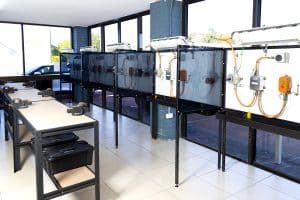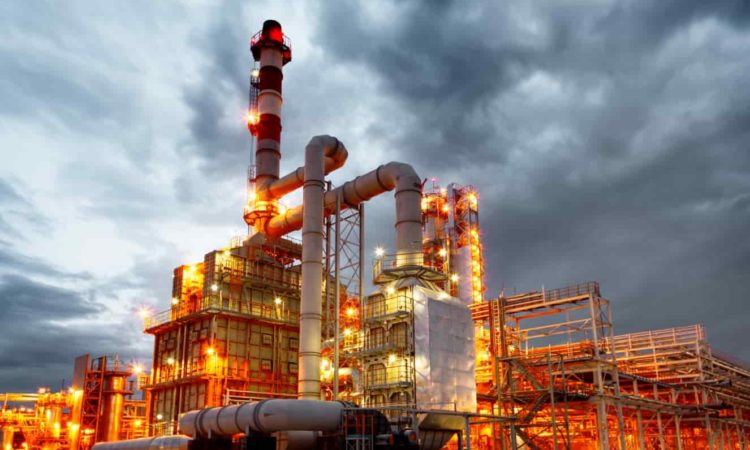Some Known Details About Roar Solutions
Some Known Details About Roar Solutions
Blog Article
Facts About Roar Solutions Revealed
Table of ContentsThe Main Principles Of Roar Solutions Roar Solutions for BeginnersThe smart Trick of Roar Solutions That Nobody is Talking About
In such an environment a fire or surge is possible when three basic conditions are met. This is usually described as the "unsafe location" or "burning" triangular. In order to shield installations from a prospective surge an approach of evaluating and classifying a potentially unsafe area is called for. The purpose of this is to guarantee the right choice and setup of tools to ultimately prevent a surge and to make sure safety and security of life.
(https://www.wattpad.com/user/roarsolutions)
No equipment needs to be installed where the surface temperature level of the devices is more than the ignition temperature of the given hazard. Below are some typical dirt unsafe and their minimal ignition temperature level. Coal Dirt 380C 225C Polythene 420C (thaws) Methyl Cellulose 420C 320C Starch 460C 435C Flour 490C 340C Sugar 490C 460C Grain Dust 510C 300C Phenolic Resin 530C > 450C Aluminium 590C > 450C PVC 700C > 450C Soot 810C 570C The probability of the risk existing in a concentration high sufficient to trigger an ignition will vary from location to location.
In order to classify this danger an installation is separated right into locations of threat relying on the amount of time the hazardous is existing. These locations are described as Zones. For gases and vapours and dirts and fibres there are three zones. Area 0 Area 20 A dangerous environment is highly most likely to be existing and might exist for long periods of time (> 1000 hours each year) or also continuously Zone 1 Zone 21 A hazardous ambience is possible however unlikely to be existing for long periods of time (> 10 450 C [842 F] A category of T6 suggests the minimum ignition temperature is > 85 C [185 F] Harmful area electric tools maybe made for usage in greater ambient temperature levels. This would certainly suggested on the rating plate e.g. EExe II C T3 Ta + 60C( This suggests at 60C ambient T3 will certainly not be exceeded) T1 T1, T2, T3, T4, T5, T6 T2 T2, T3, T4, T5, T6 T3 T3, T4, T5, T6 T4 T4, T5, T6 T5 T5, T6 T6 T6 A T Course rating of T1 suggests the optimum surface temperature level created by the instrument at 40 C is 450 C. Presuming the associated T Class and Temperature rating for the devices are ideal for the location, you can always use an instrument with a much more rigorous Department score than required for the area. There isn't a clear answer to this inquiry. It actually does depend upon the sort of tools and what repairs require to be accomplished. Tools with details examination procedures that can not be done in the area in order to achieve/maintain third event score. Need to come back to the manufacturing facility if it is before the devices's service. Area Repair By Authorised Worker: Difficult testing might not be called for however particular treatments might need to be followed in order for the tools to maintain its 3rd party ranking. Authorized personnel should be utilized to execute the work properly Fixing need to be a like for like substitute. New part need to be taken into consideration as a straight substitute needing no unique testing of the equipment after the repair service is total. Each piece of equipment with an unsafe ranking must be evaluated separately. These are detailed at a high degree below, but also for more comprehensive details, please refer directly to the guidelines.
How Roar Solutions can Save You Time, Stress, and Money.
The equipment register is a comprehensive database of tools documents that consists of a minimum set of areas to determine each product's area, technical parameters, Ex classification, age, and ecological data. The proportion of Detailed to visit their website Shut examinations will certainly be established by the Tools Danger, which is evaluated based on ignition danger (the chance of a source of ignition versus the likelihood of a combustible environment )and the dangerous area category
( Zone 0Area 1, or 2). Carrying out a robust Risk-Based Assessment( RBI )strategy is crucial for guaranteeing conformity and safety in managing Electrical Devices in Hazardous Locations( EEHA).
The 9-Second Trick For Roar Solutions

In terms of eruptive risk, a dangerous location is an environment in which an eruptive environment exists (or may be anticipated to be present) in amounts that call for special precautions for the building and construction, installment and use equipment. eeha. In this post we discover the obstacles encountered in the workplace, the danger control procedures, and the called for expertises to work safely
It issues of modern-day life that we make, keep or take care of a variety of gases or fluids that are regarded flammable, and a series of dusts that are considered flammable. These substances can, in specific problems, create explosive atmospheres and these can have major and unfortunate repercussions. The majority of us know with the fire triangular remove any type of one of the 3 elements and the fire can not happen, yet what does this mean in the context of unsafe locations? When damaging this down right into its most basic terms it is essentially: a combination of a particular quantity of release or leak of a specific substance or material, blending with ambient oxygen, and the presence of a resource of ignition.
In most instances, we can do little regarding the degrees of oxygen in the air, however we can have substantial impact on resources of ignition, as an example electric tools. Unsafe locations are recorded on the unsafe area classification illustration and are recognized on-site by the triangular "EX-SPOUSE" sign. Here, amongst various other vital information, zones are split into 3 types depending on the risk, the chance and period that an eruptive atmosphere will exist; Zone 0 or 20 is considered the most harmful and Area 2 or 22 is considered the least.
Report this page